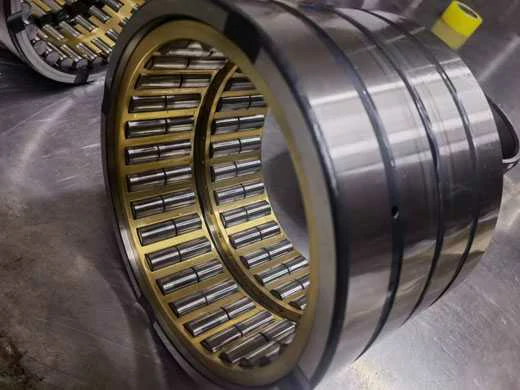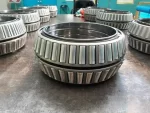Precision ball bearings are crucial components in various industries, ensuring smooth and efficient mechanical operations. Selecting and installing the right precision ball bearings is essential for optimal performance, reliability, and longevity of machinery and equipment. This article provides comprehensive guidance on how to select and install precision ball bearings to achieve peak performance and maximize operational efficiency.
Understanding Precision Ball Bearings
Precision ball bearings are designed to facilitate high precision, low friction, and smooth rotation in a wide range of applications, including industrial machinery, automotive systems, aerospace technology, and more. These bearings consist of an inner and outer ring with a cage containing precision balls. The design and construction of precision ball bearings allow for minimal friction and noise, making them ideal for demanding applications where accuracy and efficiency are paramount.
When selecting precision ball bearings, it’s crucial to consider factors such as load capacity, rotational speed, operating temperature, and environmental conditions. Understanding the specific requirements of the application and the performance characteristics of different types of ball bearings is essential for making the right selection.

Factors to Consider When Selecting Precision Ball Bearings
1. Load Capacity: It’s important to determine the magnitude and direction of the loads the bearings will be subjected to. This includes radial loads (perpendicular to the shaft) and axial loads (parallel to the shaft). Understanding the load capacity is critical for preventing premature bearing failure and ensuring long-term performance.
2. Rotational Speed: The rotational speed at which the bearing will operate influences the type of bearing that should be selected. High-speed applications require bearings capable of handling increased centrifugal forces and temperature fluctuations without compromising performance.
3. Operating Temperature: Consider the anticipated temperature range in which the bearings will be operating. High-temperature environments may necessitate the use of special materials or lubricants to maintain optimal performance and prevent premature wear.
4. Environmental Conditions: Factors such as exposure to moisture, dust, chemicals, and other contaminants should be taken into account when selecting precision ball bearings. Corrosion-resistant bearings may be necessary for harsh operating environments.
Types of Precision Ball Bearings
1. Deep Groove Ball Bearings: Suitable for high-speed and high-precision applications, deep groove ball bearings accommodate radial and axial loads in both directions. They are versatile and widely used in various industries, including motor vehicles, power tools, and appliances.
2. Angular Contact Ball Bearings: Designed to support combined radial and axial loads, angular contact ball bearings are frequently used in machine tool spindles, pumps, and gearboxes. Their ability to withstand both radial and axial forces makes them suitable for applications requiring high rigidity and accuracy.
3. Self-Aligning Ball Bearings: These bearings are capable of adjusting to misalignment and shaft deflections, making them ideal for applications where shaft misalignment is likely to occur. They are commonly used in agricultural machinery, conveyors, and mining equipment.
4. Thrust Ball Bearings: Specifically engineered to support axial loads, thrust ball bearings are suitable for applications requiring high axial rigidity. They are commonly found in automotive transmissions, steering systems, and marine equipment.

Installation of Precision Ball Bearings
Proper installation is crucial for the performance and longevity of precision ball bearings. Here are key considerations when installing precision ball bearings:
1. Cleanliness: Ensure the work area, tools, and bearing surfaces are free from dirt, dust, and contaminants to prevent premature wear and damage to the bearings.
2. Proper Handling: Avoid dropping or mishandling the bearings, as this can cause dents, scratches, or deformation, compromising their performance and lifespan.
3. Lubrication: Use the appropriate lubricant in the correct amount to reduce friction and wear. Proper lubrication is essential for maintaining smooth operation and preventing heat build-up.
4. Mounting Methods: Follow the manufacturer’s guidelines for the appropriate mounting method, whether it’s press fitting, shrink fitting, or using a mounting sleeve, to ensure the bearings are securely and accurately positioned.
5. Shaft and Housing Tolerances: Verify that the shaft and housing are within the specified tolerances to prevent unnecessary stress on the bearings and ensure proper fit and alignment.
Selecting and installing precision ball bearings requires careful consideration of various factors, including load capacity, rotational speed, operating temperature, and environmental conditions. By understanding the specific requirements of the application and choosing the right type of precision ball bearings, optimal performance and longevity can be achieved. Proper installation techniques further contribute to the reliable and efficient operation of machinery and equipment. With the right selection and installation of precision ball bearings, industries can benefit from enhanced productivity, reduced maintenance, and prolonged equipment lifespan.
.webp)
